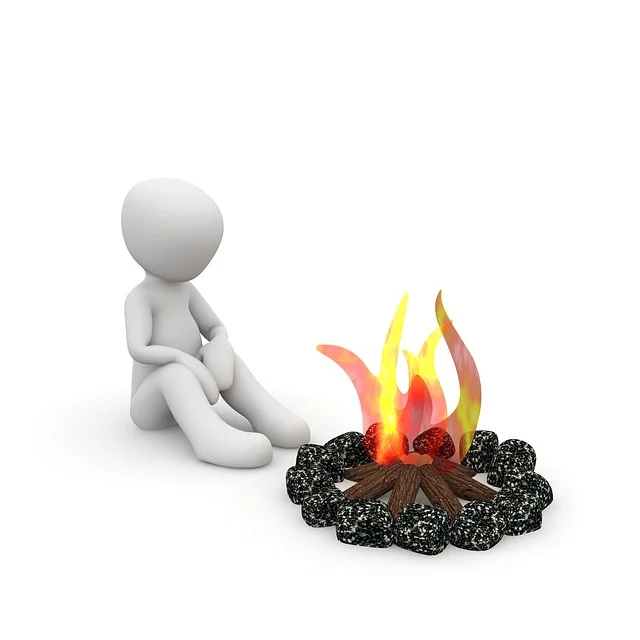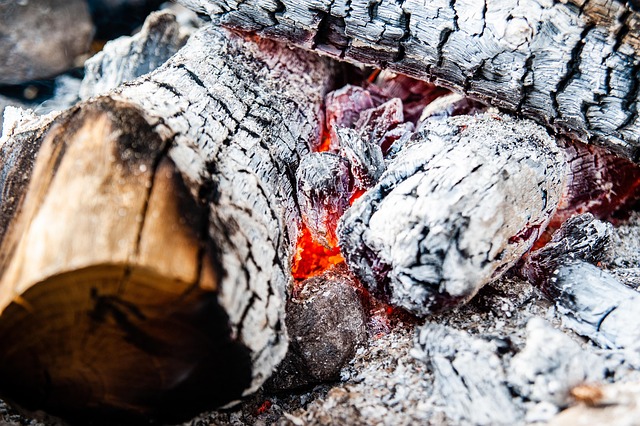Affiliate Disclosure: I earn commissions if you shop through the links below at no additional cost to you.
Last Updated on February 28, 2025 by Jeremy
Firewood selection is more than just grabbing the nearest pile of logs and tossing them into the fire. If you’ve ever struggled with a smoky, short-lived fire that barely puts out heat, chances are the wood wasn’t the best choice.
Different types of firewood produce different heat outputs, burn times, and aromas, making some varieties better than others for a campfire, wood stove, or fireplace.
This guide covers the five best types of firewood, their unique properties, and how to choose the right one for your needs.
Understanding Firewood Efficiency: What Makes Some Woods Better Than Others?

The best firewood should meet four main criteria:
- High Heat Output (BTUs) – The hotter the wood burns, the more warmth it provides.
- Long Burn Time – Dense hardwoods burn slower and last longer than softwoods.
- Low Smoke Production – Too much smoke means incomplete combustion, poor efficiency, and possible health risks.
- Minimal Sparks & Creosote Build-up – Woods that spark excessively or leave creosote in chimneys pose safety hazards.
Now, let’s break down the top five types of firewood and why they outperform the rest.
1. Oak – The Gold Standard for Firewood

Why Oak is One of the Best Firewoods
Oak is widely regarded as one of the most reliable firewoods due to its high heat output, dense structure, and long burn time.
- High BTU Rating – Oak burns extremely hot, making it ideal for heating large areas.
- Slow, Steady Burn – Its density means it burns for hours without needing constant refueling.
- Low Smoke Production – Produces minimal smoke when properly seasoned.
- Readily Available – Found throughout North America, making it easy to source.
Downsides of Burning Oak
- Takes Longer to Season – Oak should be seasoned for at least 1–2 years before burning.
- Hard to Light – Due to its density, starting an oak fire requires a good fire starter or kindling.
Best Uses for Oak Firewood:
- Wood stoves
- Long-lasting campfires
- Home heating
2. Maple – A Versatile, High-Efficiency Firewood
Why Maple is a Great Choice
Maple is a dense hardwood that offers a steady burn, strong heat output, and a mild aroma.
- Moderate to High BTU Rating – Burns hot and efficiently in both stoves and open fires.
- Easy to Split & Stack – Not as dense as oak, making it easier to process.
- Quick to Ignite – Maple catches fire faster than many other hardwoods.
- Minimal Creosote Build-up – Keeps chimneys cleaner compared to some other woods.
Downsides of Burning Maple
- Lower Burn Time Compared to Oak – While long-lasting, it doesn’t burn quite as long as oak or hickory.
Best Uses for Maple Firewood:
- Outdoor campfires
- Fireplaces with glass doors
- Medium-sized wood stoves
3. Cherry – Aromatic, Clean-Burning Firewood
Why Cherry is an Excellent Firewood Choice
Cherry wood is often chosen for its pleasant aroma and lower smoke output rather than just heat efficiency.
- Mild, Sweet Scent – Creates a pleasant-smelling fire, making it great for indoor use.
- Moderate Burn Time – Burns longer than softwoods but slightly less than oak or hickory.
- Produces Less Smoke & Sparks – Ideal for cooking or enclosed spaces.
Downsides of Burning Cherry
- Lower Heat Output – Not as hot as oak or hickory, but still effective.
- More Expensive – Cherry is valuable in furniture making, so firewood prices can be higher.
Best Uses for Cherry Firewood:
- Fireplaces
- Smokers and BBQ pits
- Campfires where scent matters
4. Ash – Easy to Burn, Low-Maintenance Firewood
Why Ash is One of the Best Firewoods
Ash is one of the most user-friendly firewoods due to its low moisture content and easy ignition.
- Can Burn When Fresh – Unlike most woods, ash burns relatively well even when green.
- Consistently Hot Burn – Produces steady, long-lasting heat with minimal maintenance.
- Splits Easily – Great for beginners who split their own firewood.
- Minimal Smoke & Sparks – A clean-burning option for both indoor and outdoor fires.
Downsides of Burning Ash
- Not as Dense as Oak or Hickory – Burns a bit faster than heavier hardwoods.
- Emerald Ash Borer Issues – Many ash trees are being destroyed by invasive pests, reducing supply.
Best Uses for Ash Firewood:
- Home fireplaces
- Campfires
- Outdoor wood stoves
5. Hickory – The Ultimate High-Heat Firewood
Why Hickory is the Best for Heat Output
Hickory is one of the hottest-burning firewoods available, making it a top choice for those who need maximum warmth and longevity.
- Extremely High BTU Rating – Burns hotter than oak, ideal for extreme cold.
- Longest Burn Time – Dense, heavy wood that lasts longer than most.
- Popular for Cooking – Used in smokers and BBQs for its strong, smoky flavor.
- Low Smoke & Minimal Creosote – A cleaner burn than many other hardwoods.
Downsides of Burning Hickory
- Difficult to Split – Its density makes it tough to process by hand.
- Expensive – Sought after for smoking and grilling, leading to higher prices.
Best Uses for Hickory Firewood:
- Cold-climate home heating
- Long overnight burns
- BBQ smoking and grilling
Other Firewood Types: What Can You Burn in a Pinch?
While the top five woods offer the best overall performance, many others are suitable alternatives:
- Birch – Easy to light, burns hot but fast.
- Poplar – Quick to ignite, burns fast with low heat.
- Pine & Spruce – Not ideal for fireplaces due to high sap content and creosote buildup.
- Cedar – Pleasant aroma, but sparks a lot, making it less safe for open fires.
- Apple – Excellent for smoking meat, but burns slowly and with less heat.
Final Thoughts: Choosing the Best Firewood for Your Needs
Whether you need high heat, long burn time, or an aromatic experience, selecting the right firewood can make all the difference in your fire’s efficiency and enjoyment.
For maximum heat output and longevity, oak and hickory are the best choices.
For a well-balanced, easy-burning option, go with maple or ash.
If you want a pleasant aroma and cleaner burn, cherry is a great option.
Regardless of which wood you choose, always season your firewood properly to reduce moisture content and improve burn quality.
Now that you know the best firewood types, which one do you prefer for your campfires or wood stove?




.jpg/:/cr=t:5.56%25,l:0%25,w:100%25,h:88.89%25/rs=w:1240,h:620,cg:true)



Leave a Reply